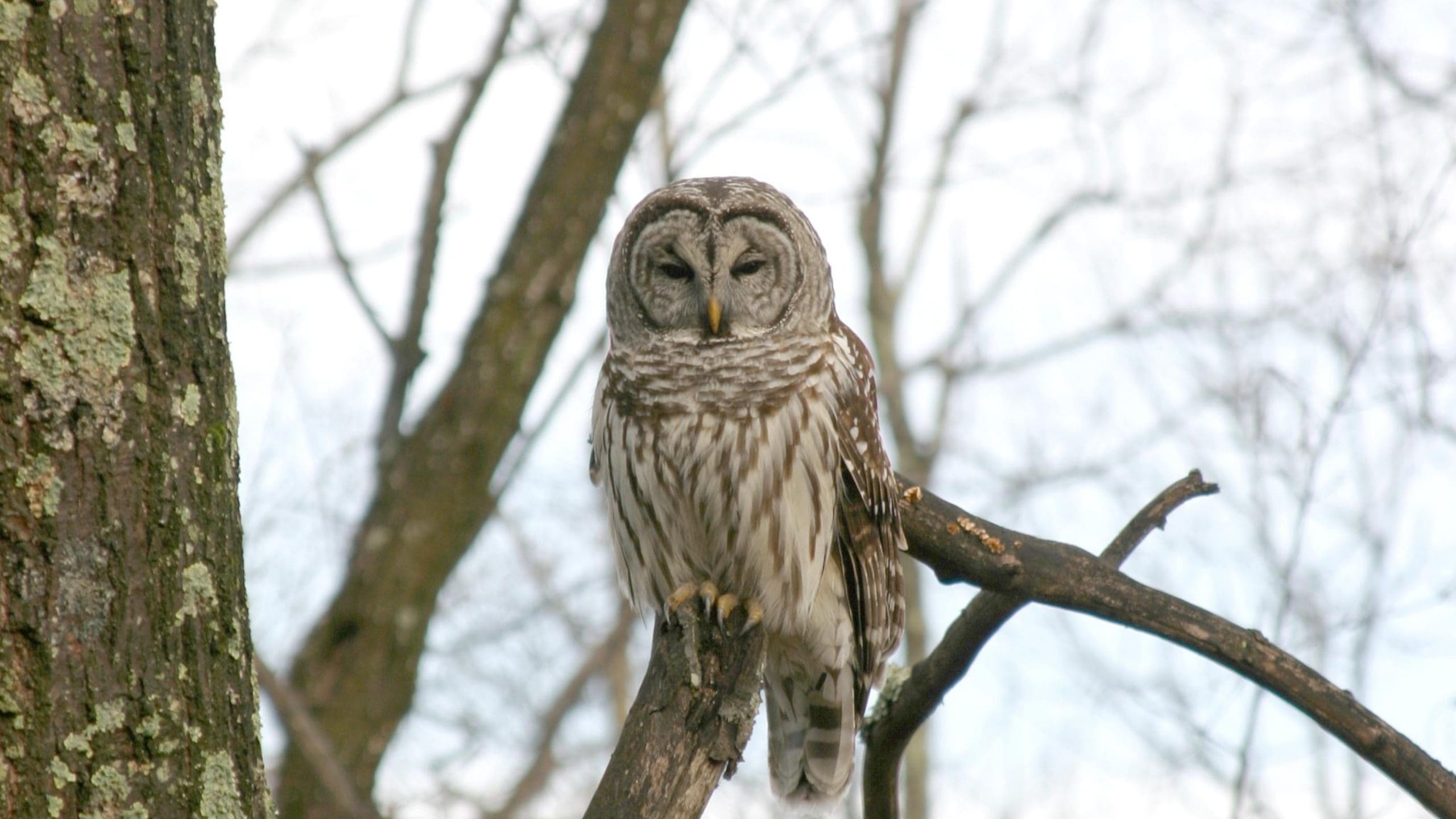Posted: May 1, 2022
Our Wildlife of the Week – 2022 Week 17…
Meet the “Barred Owl”!
(Strix Varia)
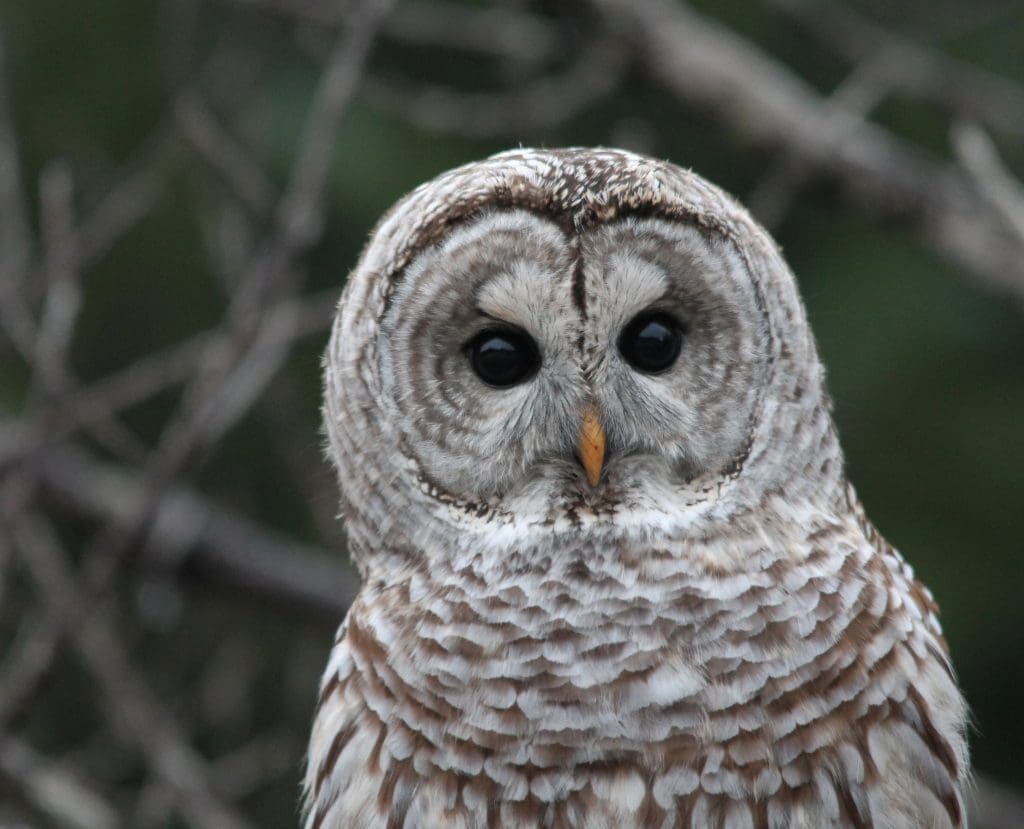
Barred Owl Physical Description
Barred Owls are a large, round-headed woodland owl with a grey-white facial disc. Its plumage is grey-brown with buff-white edges and subterminal (near the end) bars. Barred Owls have brown eyes and lack ear tufts. The neck and upper breast have transverse barring and the belly contains vertical brown streaks. Barred Owls are dimorphic (the existence of two different forms of a species especially in the same population) in body size.1
Males are 18.9 in (48 cm) in length and have a mean weight of 1.4 lbs (630 g), whereas females are 20.1 in (51 cm) in length and have an average weight of 1.8 lbs (800 g). The wingspan of Barred Owls are between 42.1 and 43.7 in (107 and 111 cm). Juveniles are a red-brown color with buff barring on the neck. Barred Owls are a very vocal species with an easily recognizable 9 syllable call; “Who cooks for you? Who cooks for you-all?”.1
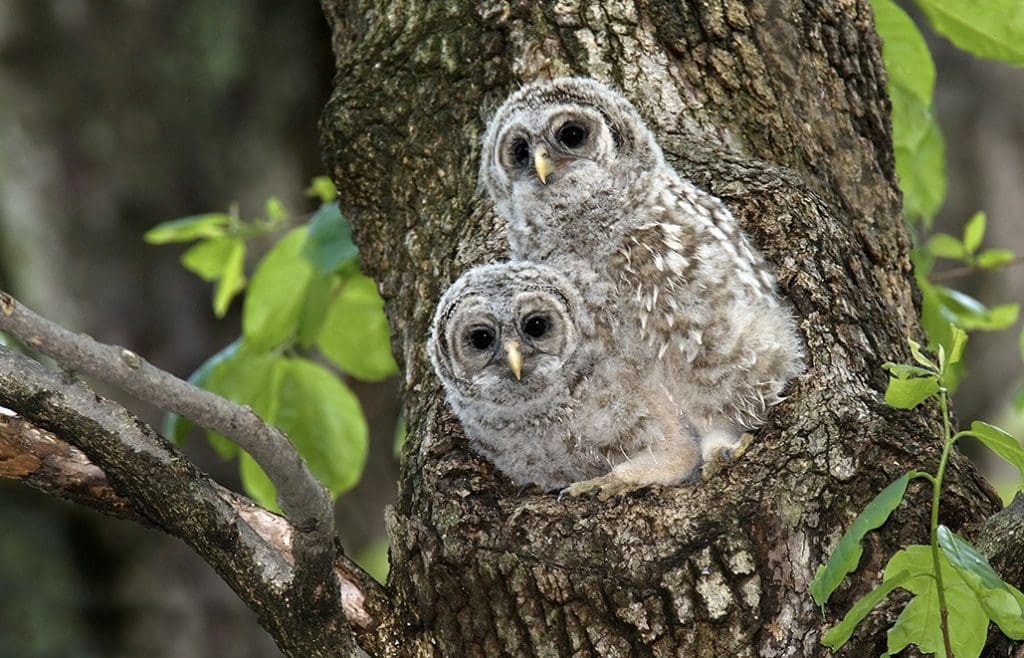
Barred Owls are monogamous, pairing for life. Barred Owls form mated pairs that stay together for life.1
Although Barred Owls prefer to nest in tree cavities, this species is known to use empty hawk nests, crows nests, or squirrel nests. A clutch of usually two to three eggs (range is from 1 to 5) will be laid in the nest. The female incubates the eggs for 28-33 days. Young do not all hatch at the same time, since egg laying occurs over a period of days and incubation begins immediately. While the female incubates eggs the male will hunt for her. Barred Owls are capable of breeding at about 2 years of age.1
SPONSORED ADVERTISEMENT
Barred Owl In Action
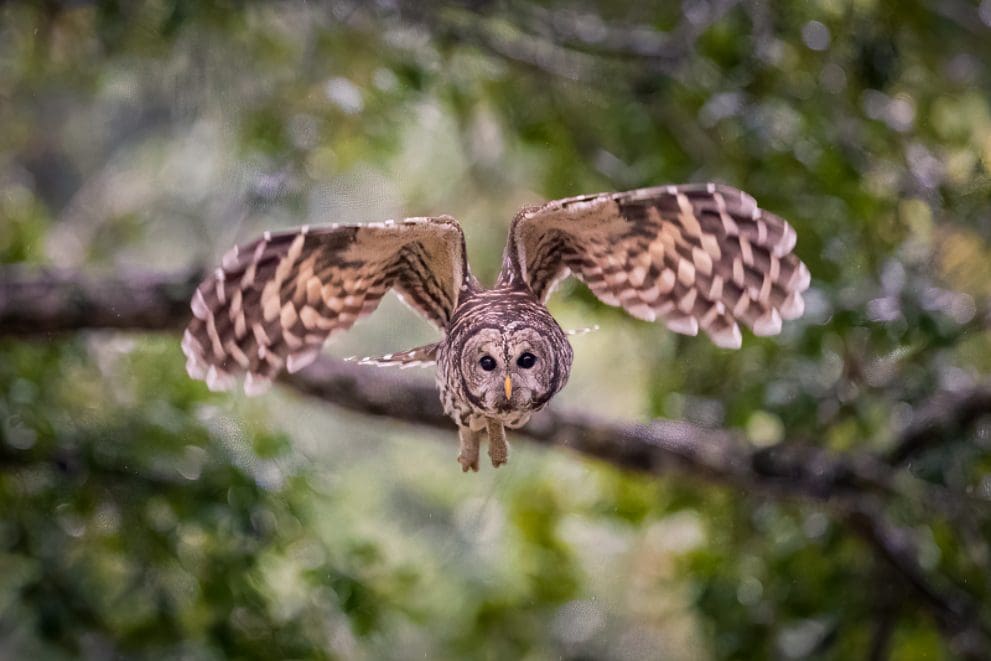
Barred Owls are primarily a nocturnal hunter, although they have been reported active during the day. Barred Owls live alone for most of the year, only living in family groups from the breeding season until the young leave the nest. Mated pairs typically live in adjoining home ranges, with the degree of overlap between home ranges increasing during the breeding season. They will call to other members of the species in the area if disturbed. Barred Owls are territorial and do not range widely unless food scarcity causes them to move farther in search of prey. They do not migrate.1
Barred Owls are very vocal species with an easily recognizable 9 syllable call: “Who cooks for you? Who cooks for you-all?”, called a two-phrase hoot. Barred Owls also communicate with other calls, including the begging calls of nestlings, ascending hoots, and caterwauling, which is typically uttered by mating pairs during duets and occasionally when subduing large prey. Barred Owls also probably communicate through some visual signals, through body language.1
Barred Owls use their keen senses of vision and hearing to detect prey from their perches.1
SPONSORED ADVERTISEMENT
Where to Spot Barred Owl
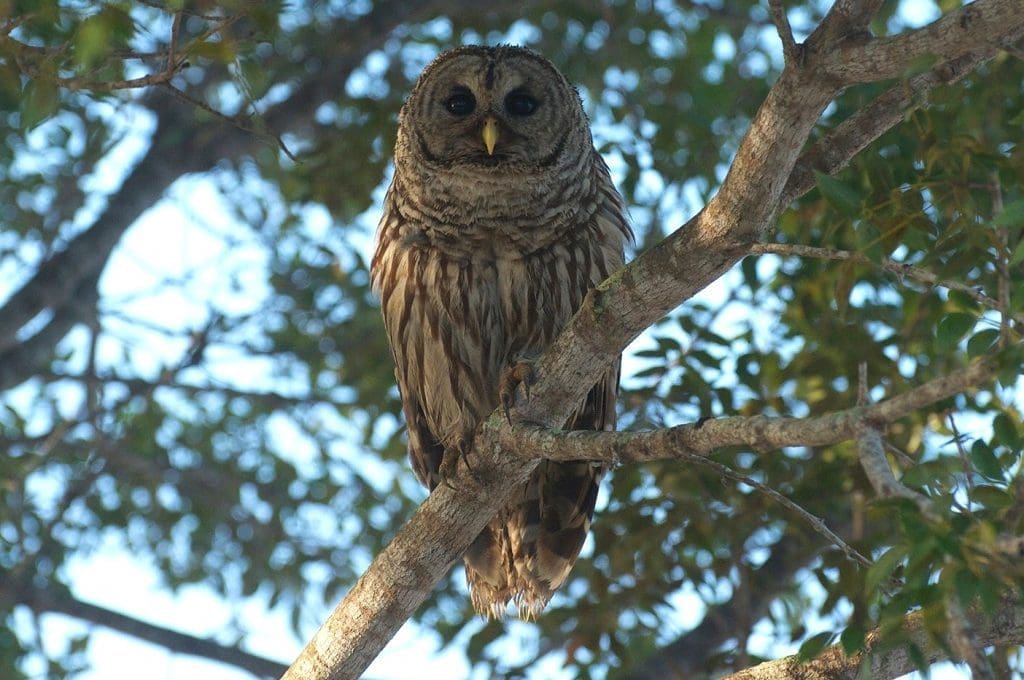
Barred Owls are arboreal, living in coniferous forests near water source, and wooded swamps. They require dense foliage for daytime roosting and large trees with cavities for nesting. Their reliance on large tree cavities means that populations of barred owls are dependent on the presence of old growth forests throughout much of their range.1
However, in the Pacific Northwest, where they have been expanding their range in recent years, they readily accept second growth tree cavities. Their close relatives, spotted owls, rely on old growth forests in this region. This has had the effect, in recent years, of increasing the likelihood of interspecific competition in the Pacific Northwest between resident spotted owl populations and new barred owl populations. Some hybridization between the species has also occurred. The overall effect is to stress an already endangered species, spotted owls.1
Barred Owls are found throughout southwestern Canada, Washington, Oregon and northern California. Its range extends throughout the eastern United States including Florida and Texas. Barred owls have expanded their range into western Canada and the United States during the twentieth century, probably as a result of human modifications of landscapes in those regions.1
The Barred Owl can be found in over 23 National Parks and many other National Park Service sites.2 Including:
- Acadia National Park
- Biscayne National Park
- Congaree National Park
- Crater Lake National Park
- Cuyahoga Valley National Park
- Everglades National Park (March 2022 – Park of the Month)
- Gateway Arch National Park
- Glacier National Park
- Glacier Bay National Park & Preserve
- Grand Teton National Park (May 2021 – Park of the Month)
- Great Smoky Mountains National Park
- Hot Springs National Park
- Isle Royale National Park
- Lassen Volcanic National Park
- Mammoth Cave National Park
- Mount Rainier National Park
- New River Gorge National Park & Preserve (February 2021 – Park of the Month)
- North Cascades National Park (April 2022 – Park of the Month)
- Olympic National Park
- Redwood National & State Parks
- Sequoia & Kings Canyon National Parks
- Shenandoah National Park (November 2020 – Park of the Month)
- Voyageurs National Park
SPONSORED ADVERTISEMENT
Barred Owl Conservation Status
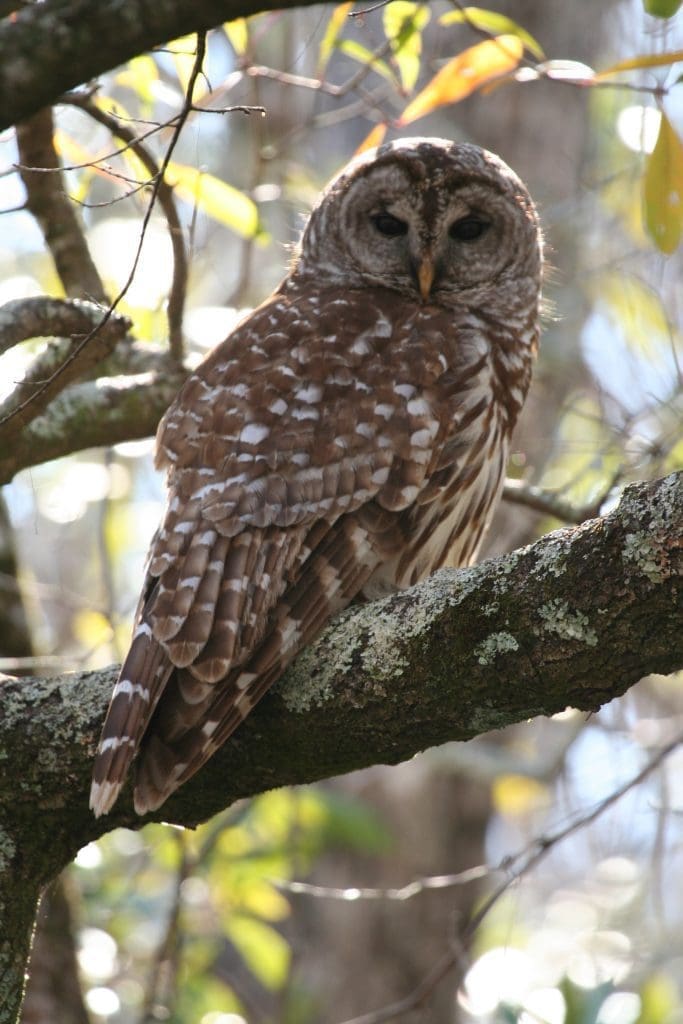
Barred Owls have been successfully expanding its range in past decades into the Pacific Northwest, where it comes into contact and competition with its close relative, Strix occidentalis, Spotted Owls. Competition and hybridization between these species stresses the already endangered populations of Spotted Owls.1
Barred Owls are important predators of small animals in the ecosystems in which they live. Barred Owls feed on small mammals, which helps keep the population of crop damaging rodents under control in rural areas.1
Barred Owl and You
Have you seen a Barred Owl in it’s natural environment? Tell us about it in the comments below!
Do you have a picture of these amazing creatures? Share it on social media with us and tag us in your post.
Use the hashtag:
#WildlifeOfTheWeek.
Interested in Wildlife Photography???
Check out this amazing beginners guide from National Geographic:
National Geographic Photo Basics The Ultimate Beginner’s Guide to Great Photography
The above links are provided in this article as affiliate links. Meaning, at no additional cost to you, we’ll earn a commission if you click one and make a purchase. An easy way to help support us if you’re going to buy anyway!
Learn more about all the amazing wildlife in our National Parks and how to safely “Watch Wildlife” on this amazing page with lots of resources from the National Park Service!
Want tips for photographing wildlife? Check out this great article for tips from the National Park Service.
Help support Discover Our Parks by becoming a Patron for as little as $1 a month! Your support will help us continue to provide articles like this and add even more information about our parks to this site.
If you want to make a one-time donation, buy us a coffee!
‘We got some of the above information from the following:
1: Animal Diversity Web – Strix Varia – Barred Owl
2: NPSpecies – Find Parks Where a Species is Found
Check out these recent posts from Discover Our Parks:
- The Isolated Black-bellied Salamander: Wildlife of the Week – 2023 Week 22
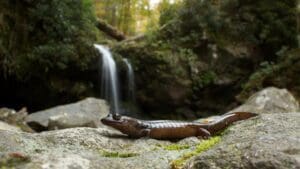
- The Splendid Sandhill Crane: Wildlife of the Week – 2023 Week 21
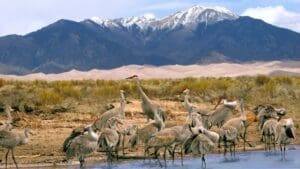
- The Promising Peregrine Falcon: Wildlife of the Week – 2023 Week 20

- The Intimidating Killer Whale: Wildlife of the Week – 2023 Week 19

- The Swift Fox: Wildlife of the Week – 2023 Week 18
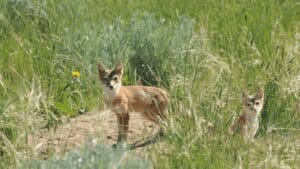
SPONSORED ADVERTISEMENT

